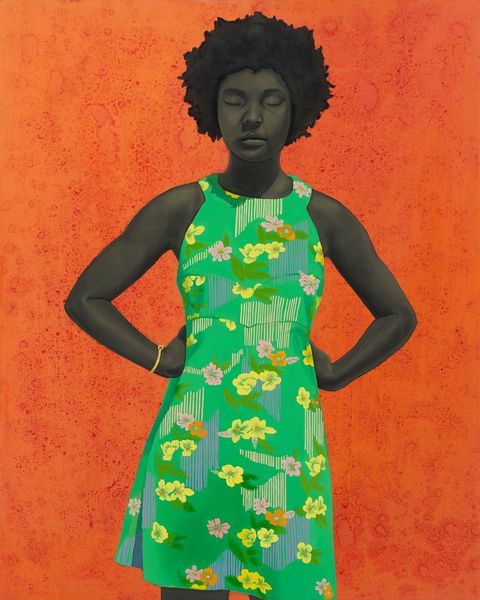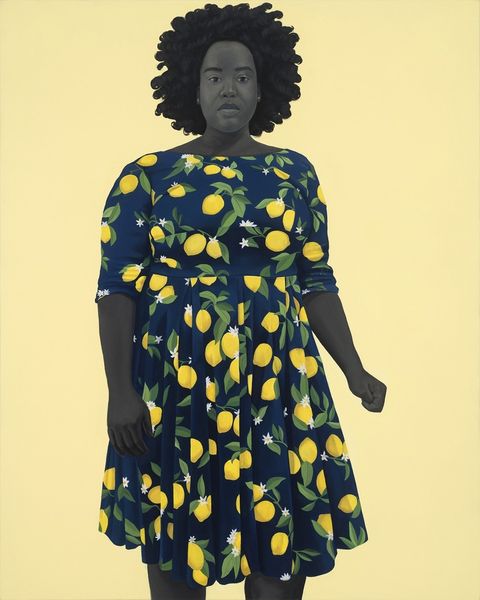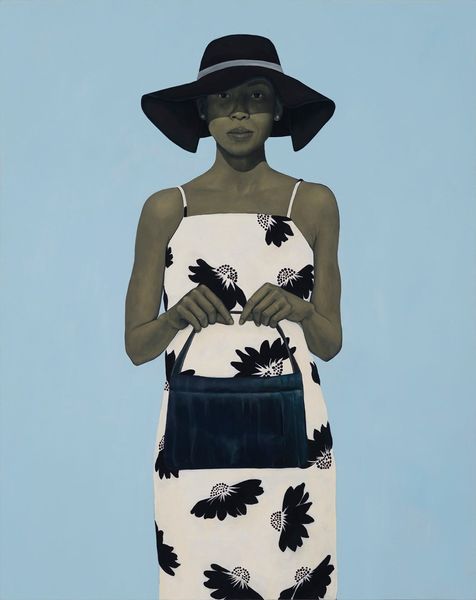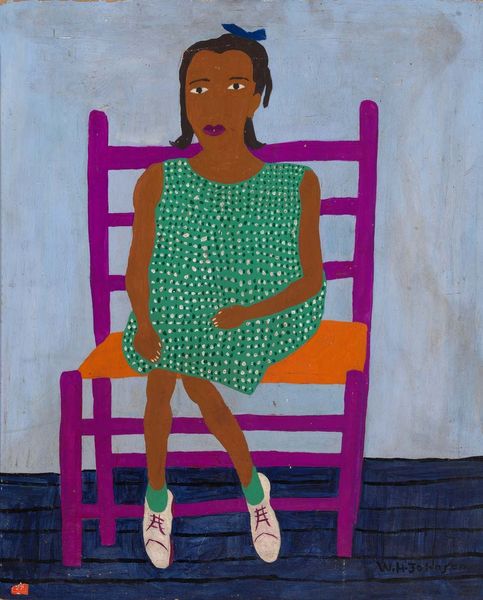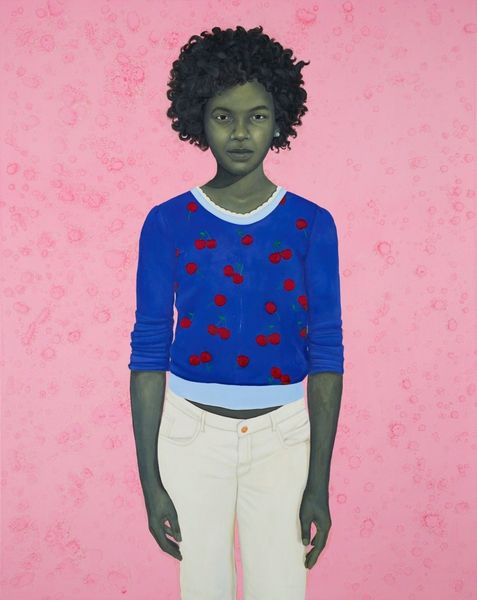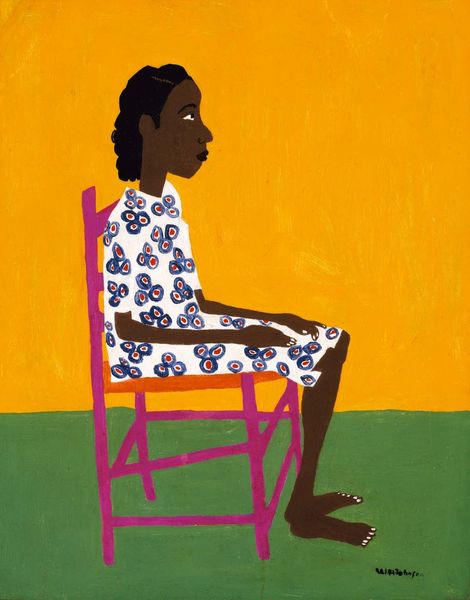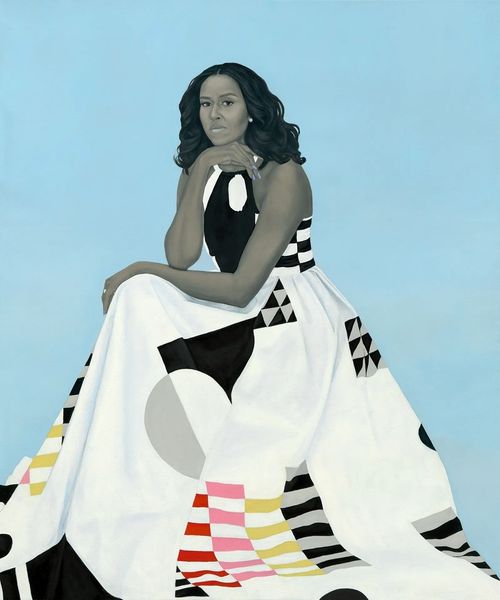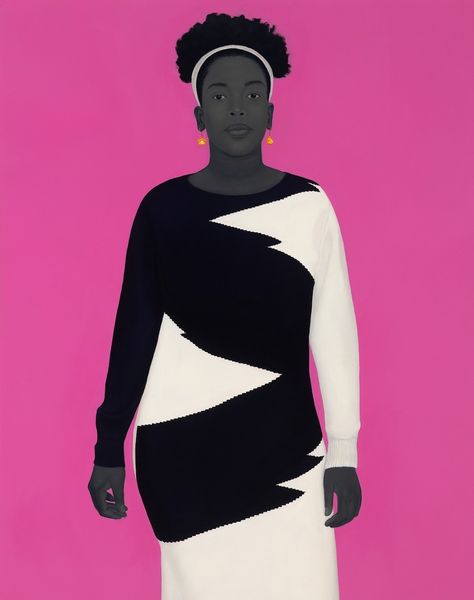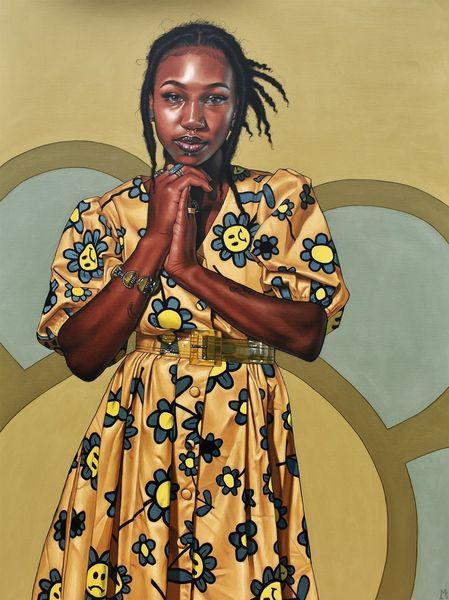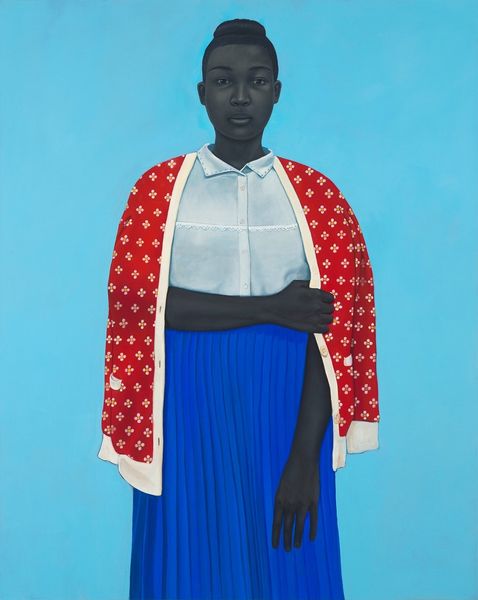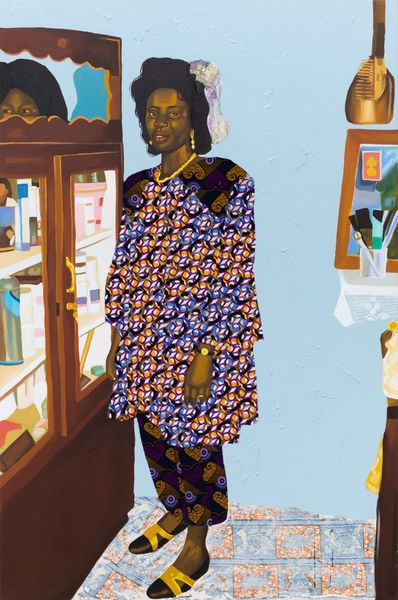
Copyright: Modern Artists: Artvee
Curator: Amy Sherald’s “There is no charm equal to tenderness of heart,” completed in 2019. Acrylic on canvas, the work exemplifies the artist's signature style. What's your first impression? Editor: Striking. The flatness and almost pastel-like color scheme create a serene, yet subtly unsettling atmosphere. Curator: Unsettling how? It strikes me as a fairly straightforward, though stylized, portrait. Note the subject's direct gaze, the precise rendering of the striped dress, and the overall balance of the composition. It's visually quite compelling. Editor: It's precisely the stylized nature that hints at something deeper. The gray-scale skin tone of the subject, set against that almost aggressively cheerful turquoise background, makes a statement. It evokes the artist's commentary on race and representation. Curator: I see your point about the gray-scale. Sherald often uses it to depersonalize and universalize her subjects. But let’s not ignore the formal elements that suggest a timelessness. The crisp lines and flat color fields call to mind early modernist portraiture and its focus on simplified forms. Editor: And the Afrofuturist elements are subtle but present—a reclamation of the past while boldly projecting Black figures into a space where they are centered, where their narratives take precedence, and they are given grace and space in both history and visual art. Curator: Do you find the title ironic in relation to her steely gaze? It's a tender sentiment. Editor: Not ironic. Rather, an aspiration and declaration. The subject asserts a right to vulnerability and grace. Her outward demeanor belies internal strength and a history of resilience. Curator: It is fascinating to think about how effectively the artist uses relatively simple colors and forms to speak volumes. It reminds us of the potential locked inside formal elements of art, if properly composed. Editor: And how crucial it is to acknowledge that those colors and forms don't exist in a vacuum. Their power emerges from the conversation they start with our history, politics, and cultural landscape. The piece certainly leaves one contemplating not just art but the role of Black women in modern society.
Comments
No comments
Be the first to comment and join the conversation on the ultimate creative platform.
